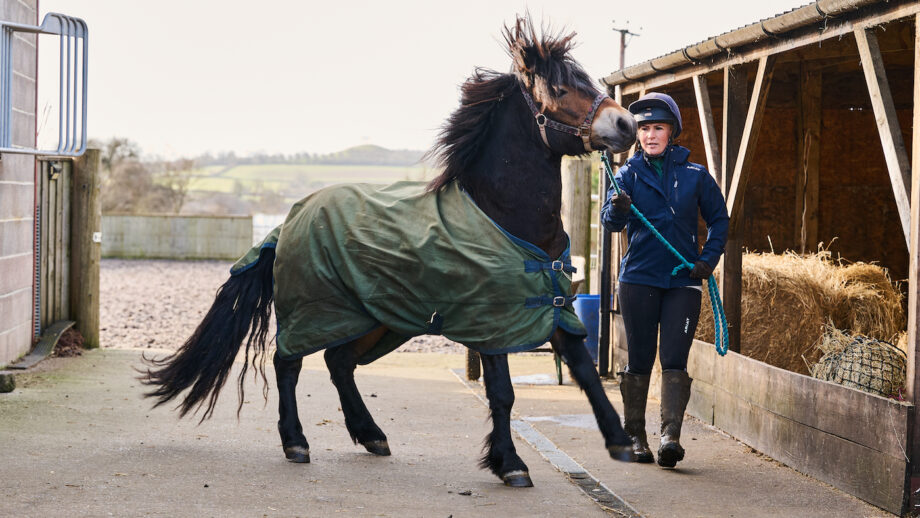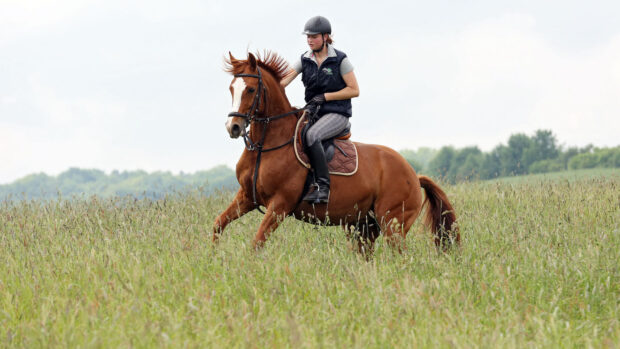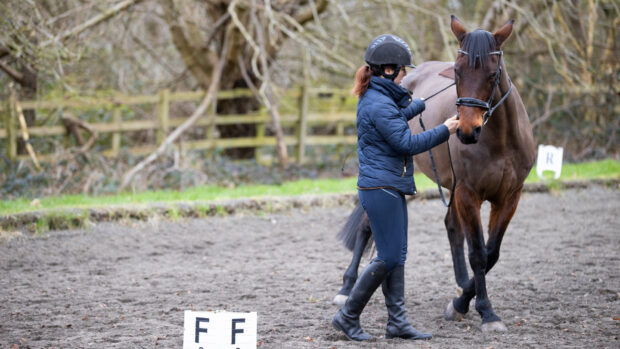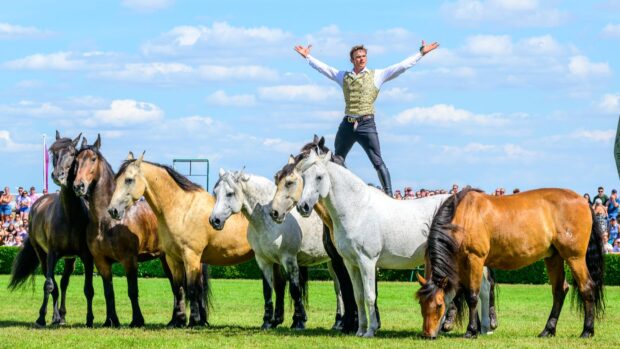A pushy, bargy horse is not much fun to be around. It can literally feel like they’re walking all over you. We asked Jason Webb, founder of Your Horsemanship, for some simple groundwork exercises to improve bargy horse behaviour. Jason is a leading UK-based Australian horse trainer who works with international riders of all disciplines and has built an outstanding reputation for solving behavioural and ridden issues at his yard in south-east England.
Jason explains: “Horses learn to become pushy the first time they move into your space and you passively step out of it. This can quickly develop into a situation where they force you to move just because they feel worried, want to move somewhere different, or fancy eating some grass.”
“Any reaction they receive is a message, so each time you move out of their path, it is a green light for them to behave in this way,” he adds.
Your horse’s behaviour may also begin as curiosity; perhaps they gently nibble your sleeve, which might at first seem quite endearing. But, Jason warns, at some point, the horse will push the boundaries, testing you with a nudge or nip to gauge your response.
“Start by asking yourself whether you can stand still around your horse or whether they force you to keep moving,” says Jason. “If you can’t stand still without the risk of being trodden on, your horse is too pushy.”
Groundwork exercises to improve bargy horse behaviour
“Firstly, you need to become more self-aware,” advises Jason. “Some people worry that asserting themselves might offend or upset a horse, but your horse must respect your personal space.
“Don’t be afraid to be clear and firm. Watch how horses communicate with each other – they respect boundaries. If you think of them as humans, rather than horses, you risk becoming ineffective and being pushed around.”
Kit: a headcollar or halter and 12-foot rope.
Exercise 1 – projecting personal energy
Aim: to create a “safe space” by projecting enough energy to move your horse away from you.
Make sure you have a well-fenced area with someone competent nearby and wear a hard hat and suitable footwear. Begin by letting the horse loose into the corner where they feel most comfortable, which might be nearest the gate and then move them away from where they want to be.
Jason advises: “Begin by finding out how much energy it takes to move your horse when they are loose. Stand tall, lean forwards, project your body, be assertive and, if necessary, make a noise, raise your hands or slap your legs.”
He adds: “Some people, especially those with low self-esteem, really struggle to assert themselves enough to achieve this.
“If you can’t create enough energy with your body, use a lead rope, stones in a bottle, a flag or a bag on a stick.
“Once the horse has moved away, maintain your space, but don’t chase the horse. If your horse comes back to their preferred area, let them, then repeat the exercise until they are happy to settle in the area that you want them to be.”
Exercise 2 – moving the hindquarters away
Aim: to maintain your personal space while you’re standing still. The horse is wearing a halter in this exercise.
To achieve this, Jason explains, it’s essential you’re able to move your horse’s hindquarters away from you while using the headcollar to prevent them moving forwards.
But he warns: “If the horse has ever pulled away from you in the past, they may try this again at some point during this exercise, because it’s a learned behaviour, in which case you may require some professional help.”
Start small and build up, using the same amount of energy you created for the first exercise directed towards their hindquarters.
The horse should step their hindlegs away from you and, for a moment, you should be able to see both eyes. If the horse moves back into your space during this exercise, you need to use more energy to move the hindquarters away.
Once you’ve consistently succeeded with this exercise, move on to exercise 3.
Exercise 3 – maintaining personal space while you lead the horse
Aim: to maintain your personal space while leading the horse.
This exercise addresses the exact point where your horse’s behaviour has previously dictated your speed and direction.
Jason explains: “I begin by leading the horse and allowing them to ‘make a mistake’ when they don’t pay attention. When this happens, I will stop while the horse walks on. Then, as they walk past, I will turn their head towards me while moving the back end away.”
He warns: “If the horse is walking past you and you are forced to step backwards, then you aren’t doing it correctly.
“You will need to push the back end away, maybe even bump the headcollar with the rope, so they turn to look at you with both eyes. You’re saying, ‘Don’t walk past me, look at me, thank you, now we go again.’
“The horse will learn that if they’re not paying attention, they can’t travel forward. When you stop, they will take themselves back, moving the hindquarters away so they can see you.
“In this way, they will give you space. You should see results within a few days.”
- If you want to read more expert advice on subjects ranging from groundwork and relationship-building to training advice for specific horse sports, subscribe to the Horse & Hound website
Did you find this article helpful? You may also enjoy reading…

Build your confidence in handling horses on the ground, whether you’re a rider or the vital helping hand

How to stop your horse being pushy on the ground – and train him to stand when tied up

Why do you lack confidence when riding or handling horses? Five questions to ask yourself

Is your horse too sharp to ride? Try these three-minute groundwork exercises to take off the edge and engage their brain before you get on

Groundwork for horses: what it is and why it’s useful




